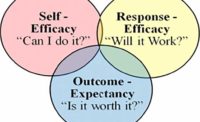Stress that feedback is necessary
Repeat after me: Practice does not make perfect. We can practice the wrong way of doing something over and over, and develop a bad habit. Only with specific behavior-based feedback can we improve and eventually 'make perfect.'Remember, risky behaviors are naturally followed by reinforcing consequences such as comfort, convenience or efficiency. That makes it easy to develop unsafe habits. Coaching with the right kind of behavioral feedback is the best way to help people practice the right way and develop safe habits.
Be positive
How do you feel when someone asks: "Can I give you some feedback?" Do you really expect the incident to be rewarding? Most people do not. Based on a lifetime of experience, feedback is more often linked with 'reprimand' than 'praise.'Your first feedback session really needs to be positive and constructive to set the tone and change those expectations. In general, the context of how feedback is delivered is crucial. The nature of the conversation or group discussion surrounding a feedback session determines whether such a process will be appreciated, supported and sustained.
Use "trial-and-success learning"
It's popular to believe that the best way to learn is by making mistakes. If we believe we learn more from our mistakes, and we act on this belief, we'll be ineffective coaches.Behavioral scientists have shown quite convincingly that we learn more from focusing on our successes than our failures. Edward Lee Thorndike demonstrated this at the beginning of the 20th century. He discovered that cats, dogs, fish, chickens, monkeys, and humans solved problems through a process he called 'trial and accidental success.' The subjects learned to solve the problems with greater and greater ease by discovering which behavior worked and then repeating that behavior.
It's ironic that descriptions of Thorndike's work referred to "trial-and-error learning." But Professor Thorndike knew better. We do learn something from feedback about our mistakes. We learn what not to do. But it's the positive feedback from our successes that produces the most learning. It helps us feel good about ourselves and the task at hand.
So if we want people to feel good about safety-related behavior, we better offer more positive than negative feedback.
Be careful with public praise
Whether positive or negative, individual feedback should not be delivered publicly without the recipient's permission. Many people feel embarrassed when receiving special attention in a group context. They might fear harassment by their peers. You know the jealousies that can surface: "Why did you deserve that special recognition? Have you been kissing up to management again?"It can be useful to give group feedback publicly. Since individual responsibility is diffused or dispersed across the group, there's little risk of individual embarrassment or peer harassment. But it's critical for this group feedback to be more positive than negative. It should be presented in terms of achievement rather than failure. Remember, we want people to look forward to the next feedback session.
Give feedback first (sometimes)
If you're already motivated to do your best, when do you want feedback in order to improve? When do you want the coach to remind you of specific behavioral steps to perform? It often makes sense to give individual feedback immediately before the next opportunity to perform the target behavior.Jason DePasquale and I recently conducted rigorous field research that found teenagers who were learning to drive increased their safe driving practices significantly only when they received specific behavioral feedback before their driving session. During baseline observation, our research assistants rated several driving behaviors of students as 'safe' or 'at-risk' on a critical behavioral checklist. After these baseline observations, one group of 14 drivers received specific behavioral feedback at the end of their driving session; student drivers in another group received it immediately before the next session. Only this later group improved their driving safety, as measured by our research assistants' use of the checklist.
I hope you can see from these five steps the importance of dispelling some common myths about feedback. These myths can actually hinder safety improvements. Set the record straight and you help enhance understanding and buy-in for a behavioral feedback process.
Five myths about feedback
1. Practice makes perfect2. Feedback is viewed as positive
3. We learn more from our mistakes
4. Give positive feedback in public
5. Feedback should always follow behavior
By E. Scott Geller, Ph.D., senior partner with Safety Performance Solutions, and professor of psychology at Virginia Tech. Dr. Geller and his partners at Safety Performance Solutions (SPS) offer seminars, books, videotapes, audiotapes, and customized consulting services on the effective application of feedback techniques. Call SPS at (540) 951-7233; www.safetyperformance.com.
